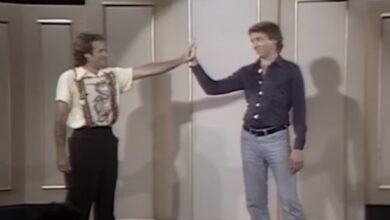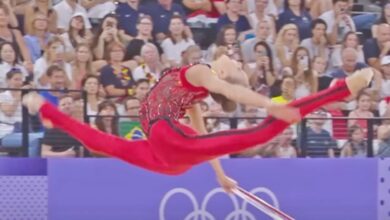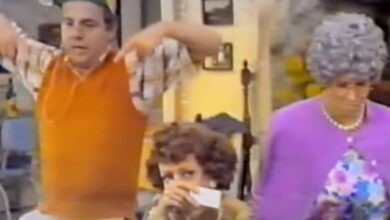Lady Gaga and Metallica’s Unstoppable Grammy Performance Turns Chaos Into Rock History
It all began at a dinner party hosted by Bradley Cooper, where Metallica’s drummer, Lars Ulrich, found himself seated next to Lady Gaga. Recognizing her deep-rooted appreciation for metal music, Ulrich proposed an unexpected collaboration: a joint performance at the upcoming Grammy Awards. Gaga, known for her versatility and fearless artistry, immediately agreed, setting the stage for a memorable fusion of heavy metal and pop.
The 59th Annual Grammy Awards, held on February 12, 2017, at the Staples Center in Los Angeles, became the backdrop for this groundbreaking performance. Gaga and Metallica chose to perform “Moth Into Flame,” a track from Metallica’s 2016 album, “Hardwired… to Self-Destruct.” The anticipation was palpable, as fans eagerly awaited this unique melding of genres.
As the performance commenced, an unexpected technical glitch threatened to derail the show. James Hetfield’s microphone malfunctioned, rendering his vocals inaudible to the audience. Demonstrating her quick thinking and professionalism, Gaga seamlessly shared her microphone with Hetfield, ensuring the performance continued without missing a beat.
The duo’s onstage chemistry was undeniable. Gaga’s powerful vocals complemented Hetfield’s gritty delivery, creating a dynamic and electrifying atmosphere. Their shared microphone became a symbol of unity and adaptability, turning a potential disaster into a testament to live performance resilience.
Adding to the night’s challenges, actress Laverne Cox, who introduced the performance, inadvertently omitted Metallica’s name. Recognizing the oversight, she promptly issued an apology, acknowledging the band’s significant contribution to the music industry.
Despite the initial hiccups, the performance was met with acclaim. Gaga’s energetic stage presence, combined with Metallica’s signature intensity, captivated the audience. Her attire—a Metallica-themed outfit—paid homage to the band’s legacy and showcased her commitment to the collaboration.
In a gesture of solidarity and fandom, Gaga revealed a new tattoo on her back: a moth design inspired by “Moth Into Flame.” This permanent tribute underscored the significance of the collaboration and her genuine admiration for Metallica.
Behind the scenes, Metallica’s guitar technician, Chad Zaemisch, shed light on the microphone mishap. He explained that a stagehand accidentally disconnected a cable, leading to the audio issues. The incident highlighted the complexities of live performances and the importance of adaptability.
The dress rehearsal for the performance had proceeded without any issues, making the live technical difficulties all the more surprising. However, the spontaneity and rawness of the live show added an authentic edge that resonated with viewers.
Critics and fans alike praised the performance for its energy and the artists’ ability to navigate unforeseen challenges. The collaboration was seen as a bold move, bridging the gap between distinct musical genres and fanbases.
Lars Ulrich later reflected on the experience, expressing his admiration for Gaga’s dedication and talent. He emphasized that the collaboration felt natural and that Gaga’s metal roots made her an ideal partner for the performance.
The performance also sparked discussions about the evolving nature of music collaborations, showcasing how artists from different backgrounds can come together to create something unique and impactful.
For Gaga, the performance was another testament to her versatility as an artist. Coming off a successful Super Bowl halftime show, she seamlessly transitioned into the heavy metal realm, further solidifying her status as a multifaceted performer.
Metallica, on the other hand, demonstrated their willingness to experiment and push boundaries, embracing a collaboration that introduced their music to a broader audience.
In retrospect, the 2017 Grammy performance by Lady Gaga and Metallica stands as a memorable moment in music history, illustrating the power of adaptability, collaboration, and the unifying force of live music.





